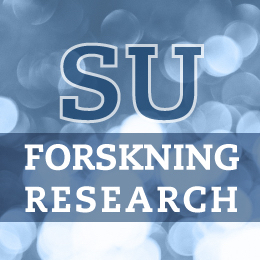Developing superconducting electronics for next-generation computers
Since 2005, Vladimir Krasnov has been a Professor of Experimental Condensed Matter Physics at Fysikum. He earned his PhD in 1995 at the Institute of Solid State Physics in Chernogolovka, Russia, obtained Docent competence in Applied Physics, and became an Associate Professor (university lector) at Chalmers University of Technology in 2004. Since 2015, his research group has been developing digital electronics based on quantized superconducting vortices. A recent project funded by the Knut and Alice Wallenberg Foundation aims to build ultra-fast, energy-efficient components for future classical supercomputers.

“Physics is my passion, profession and hobby at the same time. It continues to excite, upset, exhilarate and surprise me for almost four decades.”
What attracted you to Fysikum at Stockholm University?
“After completing my PhD, I came to Sweden (Chalmers) drawn by the strong research environment in applied superconductivity. The subsequent transition from Gothenburg to Stockholm was a necessary step in the career of a young scientist aspiring to become an independent senior researcher. At that time, Fysikum had strong traditions in several areas, though not in experimental condensed matter physics. However, the AlbaNova University Center provided a platform for fruitful collaboration between KTH, Fysikum, and the Chemistry Department at SU in the field of nanoscale technology, which is central to my research. Starting from scratch was challenging, but it became a crucial part of my professional growth. Thanks to generous support from the Knut and Alice Wallenberg Foundation and SU, we were able to build a top-notch experimental facility, opening opportunities for pursuing our plans and ideas.”
Your work focuses on superconductivity and Josephson junctions. Why are these systems so exciting?
“Superconductors are unique in many respects. First, they enable the observation of quantum-mechanical behavior in macroscopic objects and thus allow for the straightforward realization of quantum-electronic components using conventional micro- and nano-fabrication techniques. Second, their lack of resistance and extremely low dissipation make it possible to develop ultra-fast and energy-efficient electronics. Taken together, these properties open opportunities for creating superconducting electronics with entirely new functionalities, offering performance that can significantly surpass that of modern semiconductor-based electronics. This is the main motivation for the project.”
Where could this research make a real difference?
“We are living in the era of the third industrial (digital) revolution: the volume of digital information, the scale of large computational facilities, and the associated energy consumption are all increasing at an explosive rate. At the same time, silicon-based electronics is approaching its fundamental limits. To sustain the current pace of digitalization, radical and innovative solutions are required. Superconductors represent one of the most promising alternatives for the next generation of classical supercomputers. Although many technical challenges remain, the potential impact of a shift from semiconductor- to superconductor-based electronics could be as transformative as the transition from vacuum tubes to transistors.”
What is your advice to students who are starting their journey in physics?
“Important experimental discoveries are often made occasionally. Be observant for unexpected, surprising, tangential, or even unwanted effects. Exercise your curiosity and creativity trying to understand, “What was that?” Do not be afraid to deviate from the mainstream. Research is not a straight road—it is full of detours and failures that may reveal knowledge gaps and open new directions. Finding your own research path is the key to success in the academic world.”
More information
More about Professor Vladimir Krasnov
The Experimental Condensed Matter Physics group
Last updated: August 21, 2025
Source: Gunilla Häggström, Communications Officer, Fysikum


